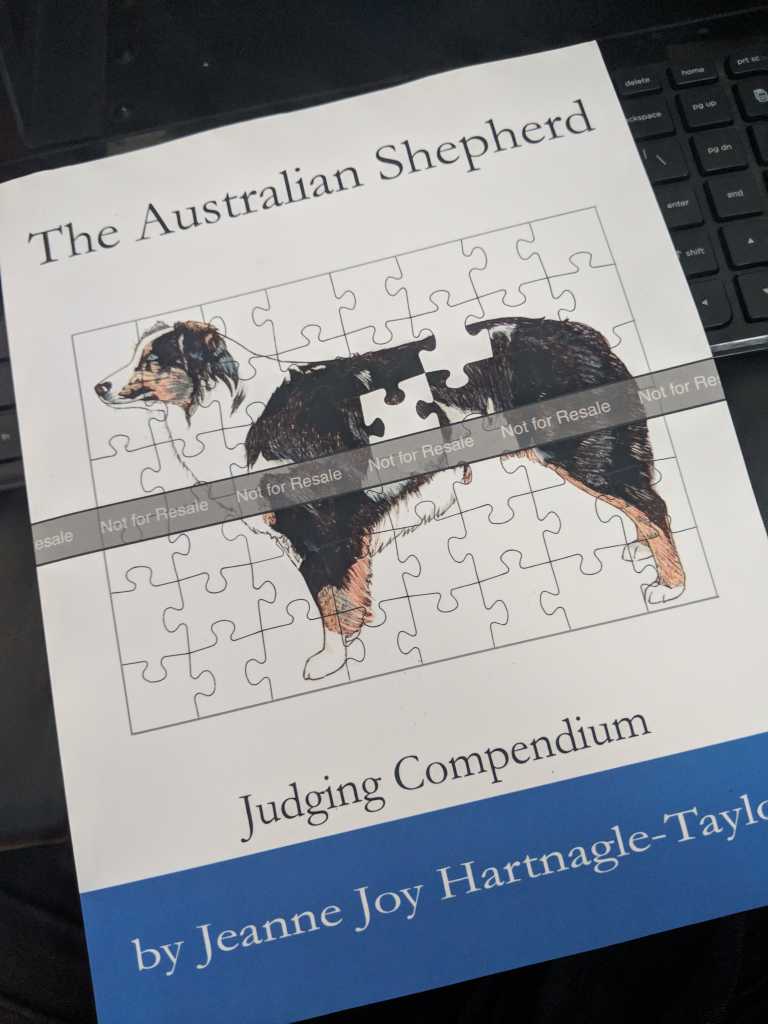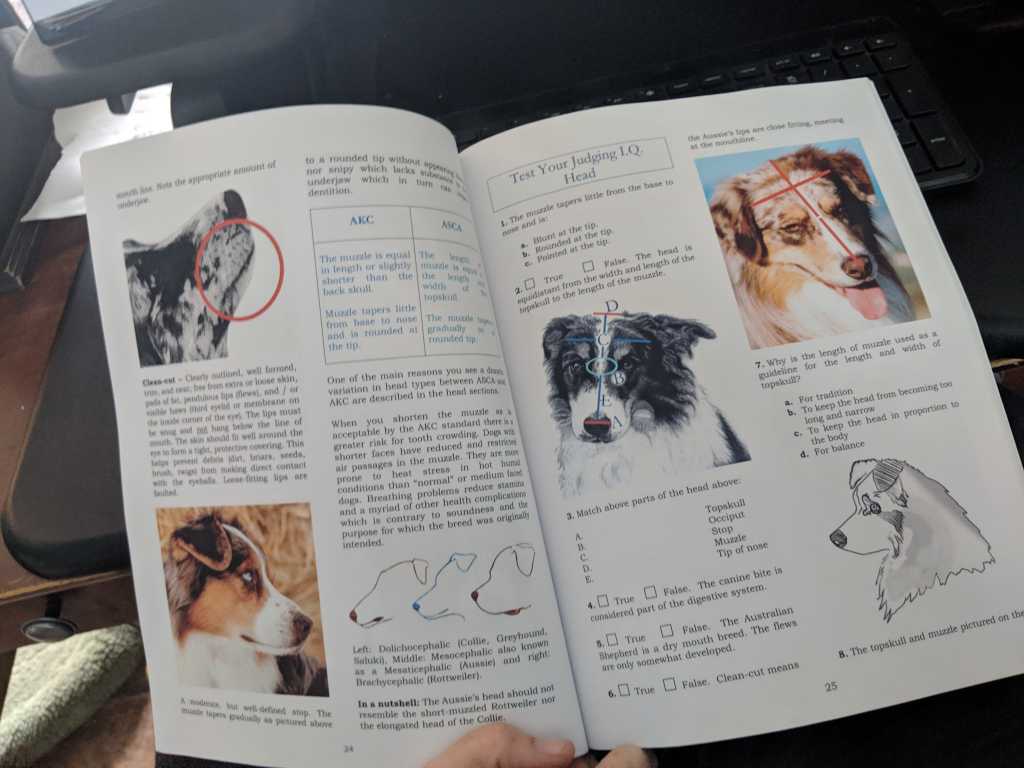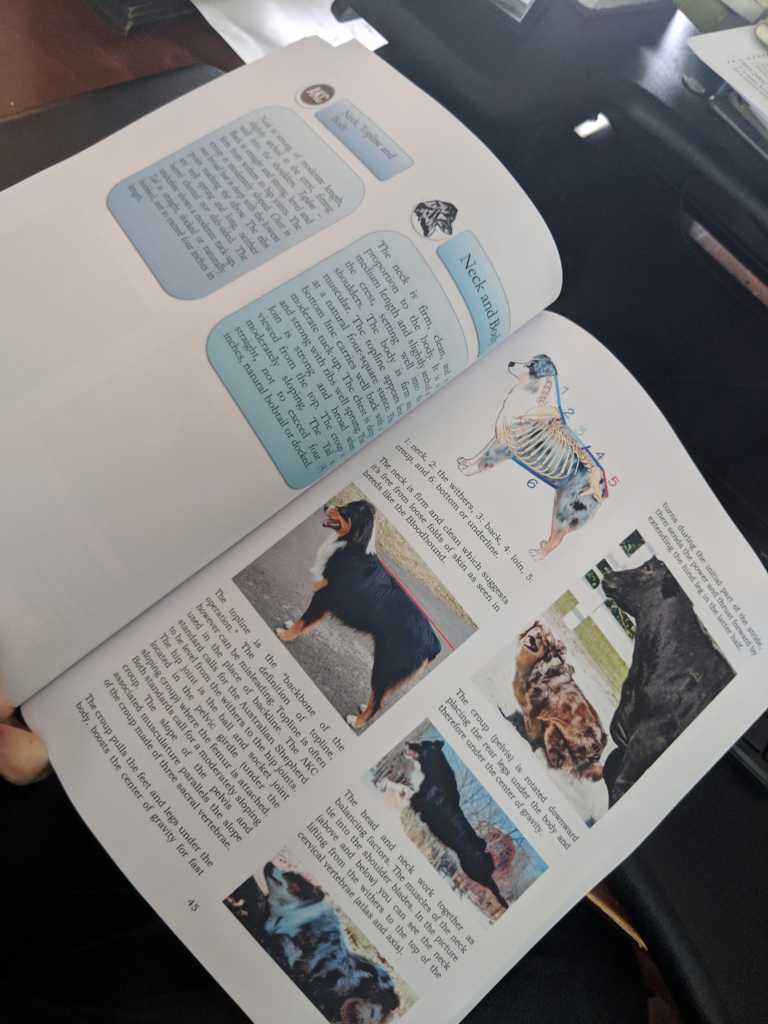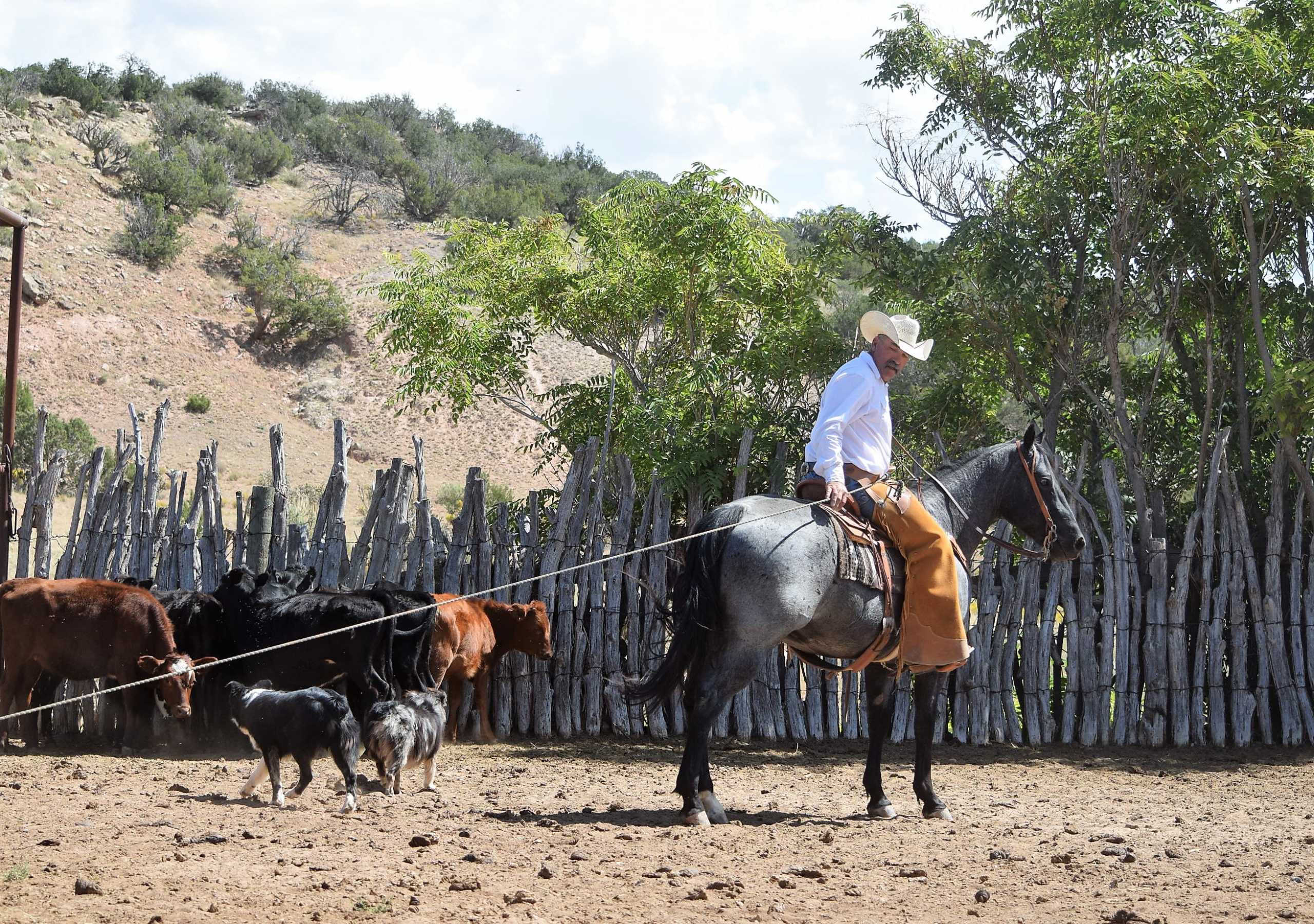By Kristin Tara Horowitz
Full disclosure: I have edit credits for the book in this review.
I was sent a previous version for review and offered to do final edits while writing this review. It is truly an honor to be involved with a book of this importance having grown up on Hartnagle-Taylor’s previous works.

The Hartnagles know how to leave a legacy, and it starts with the written word. Many of us were raised on Hartnagle-Taylor’s All About Aussies, or perhaps Joey Hartnagle’s lighter version (or both). Now comes another tome which has the potential to alter the course of the breed for good.
The Judging Compendium is unlike other efforts that have come before it to explain the breed standard, terms, and locomotion mechanics. Australian Shepherd specific, Compendium takes the academic and blends with the practical.
As someone who was raised in the show Aussie world first, I know that a lot of times, the explanation of what is ideal is generalized without practical knowledge. Phrases like “can trot all day” stick with you and create an emphasis on show ring gaiting – and specifically ground covering stride with as much reach and drive as is possible becoming an ideal. She turns that idea on its head: “An Australian Shepherd with a sound, balanced trot should translate into an Aussie that can outmaneuver livestock. The trotting style is not choppy or stilted, but not long and flowing either. The trotting style is moderate. It has to be” (83).
From my own experience really testing my dogs, I’ve seen that what might win in the breed ring isn’t necessarily what allows a dog to live into its old age still sound and enthusiastic about doing its job – I think this is truly the main message Hartnagle-Taylor wishes to convey. It has been a journey of education for me, and she’s hoping to short cut that for others.

It starts with the choice of photos and illustrations: many of the images are familiar to you if you’re a reader of her prior works and she’s chosen mainly older photos for a reason – rather than embracing the progression of the breed in the show ring or what is in favor for the Aussie type today, she wants to emphasize what the early dogs looked like and why that remains an ideal. Her choice of visuals will set in mind for many what an ideal, functional Aussie looks like. Rather than focusing heavily on what’s seen in the show ring, she uses almost no stacked photos to illustrate points, choosing a variety of types to illustrate her points, and lots and lots of movement (and I don’t mean flying trots) shots to emphasize her explanations. You will see dogs flying through the air, confronting cattle, and dipping low to heel – and you’ll understand what the mechanism is involved to allow them to do that. There is NO other book out there that I know of that does this.
She compares the ASCA and AKC breed standard and pulls no punches when it comes to how the two standards deviate and what the effect on the dog can and is becoming because of it. You’ll understand why word choice makes a difference and why choosing to fault something or not is important.
For non-judges or those without a lot of hands on experience, there is SO much here to learn and she makes it easy to see in your own dogs. You’ll connect to the historical dogs she mentions while seeing things in your own dog and deepening your understanding of the form that follows the function.
She has quizzes at the end of each chapter that are not simply intended to test what you learned, but make you stretch and truly process what you’re learning, asking questions. Because of this, I hope that it becomes a standard used for judging clinics as it fosters great discussion and deeper thinking.

I imagine that a great number of show breeders and handlers will take umbrage to some of her assertions, but my hope would be that they are open to the message – because many of us are not going to see an Aussie working practically on a ranch. Much of what’s described in the book isn’t something you can see from watching a dog at at trial, even on cattle. It isn’t until you really have to test your dog with miles on uneven and challenging terrain that you truly know what you have. It is so easy to live in a self-imposed bubble of what is correct because everyone around you thinks it is. It’s my deepest hope that this book challenges people with those ideas to either find opportunities to see this in real life or trust in those opinions that have walked the walk.
While the production value isn’t as high as if this had been done by a traditional publishing house, the amount of work the author put into this is obvious. Hartnagle-Taylor has done what a lot of us have attempted to do in the past – truly illustrate the breed standard in the context of the breed’s use and functionality – but in making it a book, heavily illustrated with diagrams, technical terms, and more, she’s leaving a lasting legacy for the breed. This is a book aimed at preservation of the breed for all its finest qualities – and it does an exceptional job of making its point.
This is a document that should be in every serious Aussie person’s library. We are fortunate to have it.





